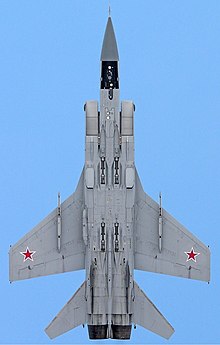Great post.Gordo14 said:Much has been said regarding the Russian defense network, and when you check them then there is no doubt that Russians have put a vast amount of effort to create them. At this point I can wholeheartedly recommend the maps which @bradyafr has created to document them. But what… pic.twitter.com/bYxrTZ5tXL
— (((Tendar))) (@Tendar) September 3, 2023
Quote:
Much has been said regarding the Russian defense network, and when you check them then there is no doubt that Russians have put a vast amount of effort to create them. At this point I can wholeheartedly recommend the maps which
@bradyafr
has created to document them. But what many forget is that those are purely tactical elements which - detached from a overarching strategy - offer little.
The Ukrainian counteroffensive has been going on for almost 3 months and over this period of time the Ukrainian onslaught has created some gaping wounds in the Russian defense network. It started Velyka Novosilka which was culminating in the devastating Russian defeat and costly withdrawal in Urozhaine.
Far more dangerous, however, for the Russian war effort are the Ukrainian operations south of Orikhiv. Russians have specifically fortified this area. Especially, Robotyne was vital for the Russian defense sector. It also explains also why Russians continue to counter attack this area, knowing their weakness in the hinterlands.
But this is not even the worst for the Russians. Far worse is that this whole battle has evolved in an open tug-of-war. Both sides know more less the strengths and weaknesses of each other. The open terrain makes sneak attacks and counterattacks virtually impossible. This is only emphasized by the usage of drones. Some might argue that this point might be favorable for Russians but even that Russians squandered long ago.
The biggest thinking error many, especially Russians, are making is to make this about trench networks. The trenches are delaying the advance, there is no doubt about that. But the most crucial aspect of this battle is logistics, as always. And here Russians made absolutely decisive mistakes, by not targeting Ukrainians logistic lines in the same way than the other way around. Ukrainians masterfully and since day one of this operation targeted all the logistics hubs and HQs from Melitopol to Tokmak.
It is also those Russian logistics lines which get increasingly compromised. I have added Screenshot 1 where some of the Russian trenchlines are marked, including the far more vital and primary logistic lines. Most of them are in range of Ukrainian tubed artillery.
Another aspect which Russians have not employed as much as Ukrainians is the usage of drones. The occasional lancet strike is published, of course, but the drone warfare is a matter of quantities. The Ukrainian FPV strikes are far more numerous. To put that into perspective: Magyar birds alone have destroyed Russian equipment worth a billion USD (!), while using drones which do not exceed in price of 10,000 USD, and most of them being even below 1,000 USD. The flow of new drones is not only exceeding, but also being supported by a vast Ukrainian drone industry, which comes up with more intriguing and even cost-effective drones. This comes parallel with the long-range drones which increasingly strike vital Russian bases far away from Ukraine.
The bulk of the drones at the front have a range of 5km and when you overlay this (Screenshot 2) on the Ukrainian advance then you see that in this orange area that life for a Russian soldier is short. This is also the area where increasingly the Russian elite force such as the 76th Guards Air Assault Division are getting hammered and softened up, while the heavy Ukrainian brigade still wait for the big push.
All and all Russians have completely lost the initiative and only hope that Ukrainians stop their assault. The frantic call of Pro-Russian minions such as Hungary's Orban are a very good sign how much in distress Russia has come. They desperately need and hope that the Ukrainian attack stops, and if they don't then we are not far away from a complete Russian collapse along the southern front. This collapse is only determined by how and when the Russian logistics will not be able to repel Ukrainian attacks in an organized fashion, and that point is nothing what you can see on maps where trenchlines are marked. It is determined by logistic lines and their hubs as well as the attrition rate. When this tipping point is reached, then collapse of Russian army in Zaporizhzhia is complete.
The dire situation for Russians will move then from critical to hopeless when Ukrainians break through the lines and storm to the Azov Sea. In the early stages of this open war, Russians focused on securing the Azov coast in order to protect their bases in Crimea. With the Ukrainian arsenal such as HIMARS, Stormshadows/Scalp-EG and likely soon TAURUS, as well, Ukrainian control of whole Zaporizhzhia will make the Russian occupation in Crimea untenable. It will be similar to Germany 1944 where a fight might still continue another year (which it did), but it wouldn't change the outcome. The liberation of Zaporizhzhia by Ukrainians forces equals Russia's strategic defeat. Both sides know that.
This is why the influx of resources and ammunition for Ukrainian forces must be sustained and increased. The fight will go on for some time but in end Russia will lose this battle. Even when supplies are delayed there is no way that Russia can turn the tide, but any delay in supplies could result in an unnecessary and prolonged war. It is time that some Western leaders, especially in Germany, stop sitting on their hands and turn on the factories. The earlier it is done, the earlier we can end this miserable war.



